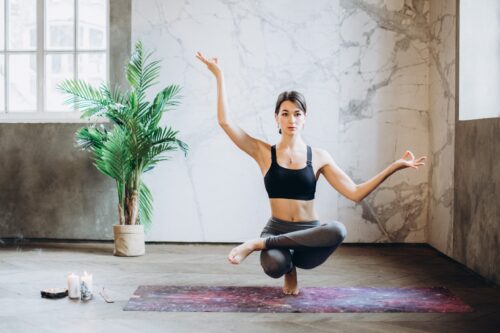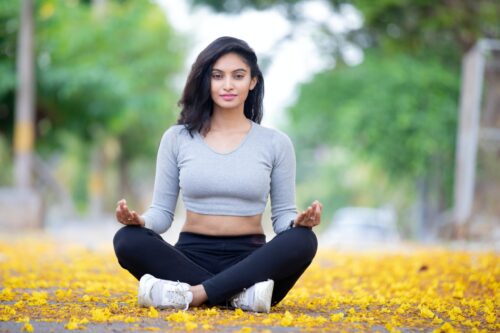Introduction
- The allure of Indian Yoga: Exploring the ancient art of physical, mental, and spiritual well-being
- Understanding the roots of Indian Yoga: Tracing its origins and significance
Section 1: The History and Philosophy of Indian Yoga
1.1 Ancient Beginnings
- This section explores the origins of yoga and its connection to the ancient Indus Valley civilization. It discusses how yoga has evolved over time, starting from the Vedic texts to the Yoga Sutras of Patanjali, which are considered a foundational text in yoga philosophy.
1.2 The Eight Limbs of Yoga
- Here, the outline delves into the principles of Ashtanga Yoga, also known as the Eight Limbs of Yoga. It explains the significance of Yamas and Niyamas, which are moral and ethical guidelines that form the basis of yogic practices.
1.3 Paths of Yoga
- This section introduces the different paths or branches of yoga, such as Karma Yoga (path of selfless action), Bhakti Yoga (path of devotion), Jnana Yoga (path of knowledge), Raja Yoga (path of meditation), and Hatha Yoga (physical yoga). It emphasizes the importance of choosing a path based on individual preferences and goals.

Section 2: The Physical Aspects of Indian Yoga
2.1 Asanas: Yoga Poses for Physical Well-being
- This section focuses on yoga asanas, which are physical poses practiced in yoga. It highlights the benefits of practicing asanas and provides a comprehensive guide to beginner, intermediate, and advanced poses, promoting physical well-being.
2.2 Pranayama: Harnessing the Power of Breath
- Here, the outline explores the practice of pranayama, which involves breath control techniques in yoga. It explains the significance of breath control, its effects on the body and mind, and introduces various pranayama techniques.
2.3 Yoga Mudras: Channeling Energy and Intentions
- This section discusses yoga mudras, which are hand gestures used during meditation and healing practices. It explains how mudras can enhance concentration, facilitate the flow of energy, and promote overall well-being.

Section 3: The Mental and Spiritual Dimensions of Indian Yoga
3.1 Meditation: Cultivating Inner Peace and Awareness
- This section delves into the practice of meditation, exploring its science and benefits. It introduces different meditation techniques, such as mindfulness and transcendental meditation, that help cultivate inner peace and awareness.
3.2 Yoga Nidra: The Yogic Sleep for Deep Relaxation
- The outline explains the practice of yoga nidra, often referred to as yogic sleep, which is a deep relaxation technique. It describes how to experience a yoga nidra session step-by-step and emphasises the benefits of yoga nidra for relaxation and stress reduction.
3.3 Chakras and Energy Centers
- Here, the outline explores the concept of chakras, which are energy centers in the body, and their significance in yoga. It discusses the seven major chakras and their connection to physical and emotional well-being.

Section 4: Indian Yoga and Holistic Health
4.1 Yoga for Stress Management
- This section focuses on how yoga can be a useful technique for reducing stress and fostering mental health. It provides insights on incorporating yoga into daily routines for maximum stress relief.
4.2 Yoga for Physical Fitness and Flexibility
- The outline discusses how yoga can contribute to physical fitness, strength, flexibility, and balance. It emphasizes a holistic approach to physical well-being through the practice of asanas and yoga sequences.
4.3 Yoga and Ayurveda: Complementary Practices
This section examines the relationship between yoga and Ayurveda, the traditional Indian medical system. It examines how yoga and Ayurveda can work together to promote general well-being and how Ayurveda can increase the advantages of yoga practise.
Conclusion
In the conclusion section, the outline summarizes the key points discussed throughout the blog post. It emphasizes the transformative power of Indian Yoga as a path to holistic well-being, encompassing physical, mental, and spiritual growth. The conclusion aims to inspire readers to embark on their own yoga journey and experience the profound benefits it offers.
FAQs
1. What is the best time to practice yoga?
This question provides guidance on the ideal time of day to practice yoga and explains the benefits of practicing during specific times.
2. Can anyone practice yoga, regardless of age or fitness level?
This question addresses the inclusivity of yoga and clarifies that anyone, regardless of age or fitness level, can practice yoga and experience its benefits.
3. How long does it take to see the benefits of regular yoga practice?
This question provides insights into the timeline for experiencing the benefits of regular yoga practice, emphasizing that consistency and dedication are key.
4. Are there any precautions to consider before starting a yoga practice?
This question highlights the importance of considering any precautions or contraindications before starting a yoga practice and encourages readers to consult with healthcare professionals if needed.

